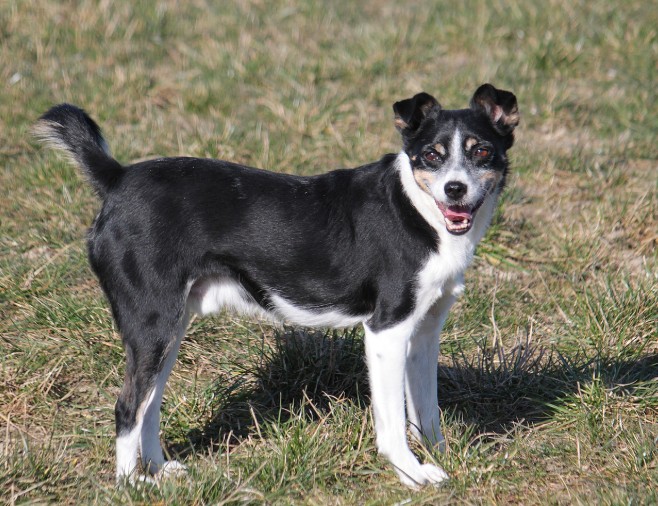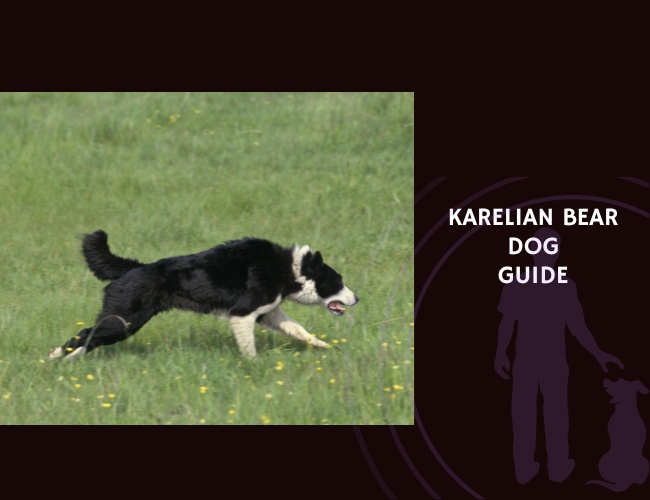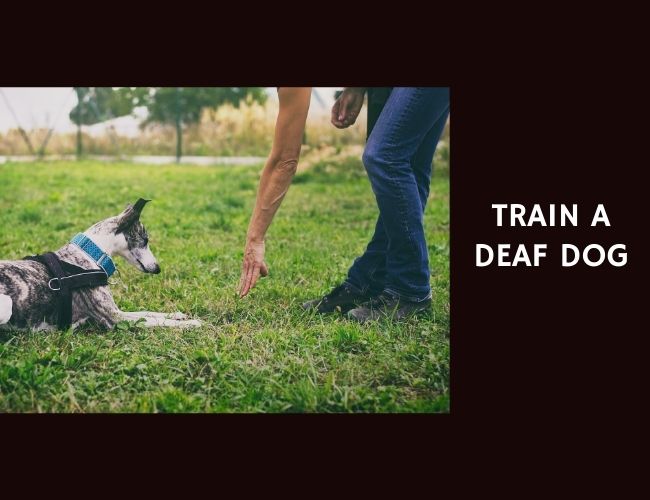Did you know that in Japan, a small team of Karelian Bear Dogs reduced dangerous bear encounters from 255 incidents to just 4 in eleven years? This remarkable Finnish breed, whose lineage traces back to Stone Age Europe, represents one of the most courageous and capable hunting dogs ever developed. With their distinctive black and white coat and an unwavering spirit that can face down a brown bear, the Karelian Bear Dog (Karjalankarhukoira) stands as Finland’s national treasure—and for good reason.
If you’re drawn to primitive breeds that maintain their ancestral working abilities, the Karelian Bear Dog offers an extraordinary glimpse into the ancient partnership between humans and dogs. But let’s be clear from the start: this isn’t your typical family companion. This is a dog that requires an owner who can match its intensity, provide for its substantial needs, and respect its powerful heritage. Let us guide you through everything you need to know about this remarkable breed.
Character & Behavior: Understanding Your Karelian’s Ancient Soul
The Karelian Bear Dog’s character is shaped by thousands of years of evolution in the harsh Nordic wilderness. These dogs carry the spirit of their ancestors—the ancient Komi dogs that accompanied early settlers to Finland and the Karelia region. When you look into a Karelian’s alert eyes, you’re seeing the same fierce intelligence that has protected hunters from bears and wolves for generations.
The Working Heritage That Defines Them
Your Karelian Bear Dog isn’t just brave—they’re programmed for a very specific type of courage. Bred to hunt dangerous game including brown bears, moose, wild boar, and wolves, these dogs developed what we call “calculated fearlessness.” This means your furry friend won’t back down from a threat, but they’re also smart enough to use tactics rather than brute force.
The breed’s working style is fascinating from a behavioral perspective. Unlike hounds that chase prey in packs, Karelians work alone or in pairs, often at significant distances from their human partners. This independence isn’t stubbornness—it’s the result of selective breeding for dogs that could make life-or-death decisions without human guidance. They’re silent stalkers who only bark when prey is cornered, using a rapid, high-pitched “baying” bark that can hold a bear at bay for hours.
What does this mean for you as an owner? You’re living with a dog whose amygdala (the brain’s fear center) responds differently than most breeds. Where other dogs might flee from danger, your Karelian evaluates, positions, and engages. This neurological wiring affects everything from their reaction to strangers at your door to their behavior on walks. 🧠
Temperament: The Loyal Guardian’s Heart
Despite their fierce hunting reputation, Karelian Bear Dogs form intensely devoted bonds with their families. You might notice your dog develops a particularly strong attachment to one family member—this is their “primary person,” and the bond can be almost telepathic in its intensity. They’re constantly vigilant, aware of every sound and movement in their environment, making them exceptional watchdogs who will protect you “with their life,” as multiple breed experts note.
However, this loyalty comes with complexity. Your Karelian will be naturally reserved with strangers—not aggressive toward humans, but certainly not the type to greet every visitor with a wagging tail. Think of them as discerning judges of character who need time to warm up to new people. This wariness is hardwired into their DNA, a trait that kept their ancestors alive in dangerous territories.
The breed shows distinct behavioral differences between working and companion lines:
Working-bred Karelians display:
- Intense prey drive that never truly “turns off”
- Greater tendency to roam and patrol large territories
- Enhanced stamina that demands 3+ hours of activity daily
- Stronger territorial behaviors and alertness
Companion-bred individuals may show:
- Slightly softened hunting drive (though still significant)
- Better adaptability to family routines
- Improved sociability with consistent early training
- Maintained protective instincts with somewhat better impulse control
The Independent Thinker’s Mind
Your Karelian Bear Dog possesses what ethologists call “environmental intelligence”—the ability to rapidly assess and respond to complex situations. This isn’t the eager-to-please intelligence of a Border Collie or the problem-solving cleverness of a Poodle. Instead, it’s a practical, survival-oriented intelligence that can sometimes frustrate owners expecting immediate obedience.
These dogs demonstrate remarkable cognitive abilities including:
- Terrain navigation that allows them to work in dense forests and mountainous regions
- Prey differentiation through varied barking patterns (different sounds for bear versus moose)
- Persistence cognition—the mental stamina to maintain focus for hours while holding dangerous game at bay
- Risk assessment that helps them decide when to engage versus when to maintain distance
You’ll see this intelligence manifest in everyday situations. Your Karelian might ignore a “come” command if they’ve detected something you haven’t noticed yet—they’re not being disobedient, they’re prioritizing based on their assessment of the situation. This can be both fascinating and challenging for owners used to more biddable breeds. 🐾
Vocalization & Communication: Decoding Your Karelian’s Language
Understanding how your Karelian Bear Dog communicates is essential for building a trusting relationship. These dogs have a rich vocabulary of sounds, each with specific meaning rooted in their hunting heritage.
The Bark That Stops Bears
The Karelian’s signature vocalization is their “baying” bark—a rapid, high-pitched series of barks used to hold prey in place. In a home setting, you might hear modified versions of this when your dog alerts to visitors or unusual sounds. The intensity and rhythm tell you different things:
- Single, deep barks: General alert, something noteworthy detected
- Rapid, repeated barking: Active threat or high excitement
- High-pitched, staccato barks: Prey or small animal detected
- Low rumbling: Warning to other dogs or animals to maintain distance
Unlike breeds that bark recreationally, every vocalization from your Karelian has purpose. They’re not “yappy” dogs, but when they do speak up, it’s worth paying attention. Many owners report their Karelians have different barks for different family members returning home—a personalized greeting system that shows their sophisticated social awareness.
Body Language: The Silent Conversation
Your Karelian communicates volumes through body positioning and subtle signals. Watch for these important cues:
Tail positions tell complex stories:
- High and still: Alert, assessing potential threat
- Curled over back with movement: Confident, potentially ready to engage
- Low and relaxed: Comfortable in environment
- Tucked: Stressed or submissive (rare in this breed)
Ear movements reveal focus and mood:
- Forward and rigid: Intense focus, possibly on prey
- Relaxed and mobile: Calm, monitoring environment
- Pinned back: Defensive or stressed
The breed’s double coat also participates in communication. You might notice your dog’s hackles rise not just in aggression, but during intense focus or excitement. This piloerection is part of their primitive communication system, making them appear larger to potential threats.

Training & Education: Shaping Your Independent Hunter
Training a Karelian Bear Dog requires understanding that you’re working with thousands of years of independent decision-making genetics. This isn’t a breed that lives to please you—they’re partners who need to understand the value in cooperation.
Early Socialization: The Critical Foundation
The period between 3 and 16 weeks will largely determine your Karelian’s ability to adapt to modern life. Miss this window, and you’ll spend years trying to compensate. Here’s your critical timeline:
Weeks 3-4: Begin gentle handling, introducing different textures and mild environmental stimuli. Your puppy’s neurological system is rapidly developing, and positive experiences now create lasting neural pathways.
Weeks 4-8: This is your golden window for human socialization. Your puppy needs to meet at least 100 different people during this period—men, women, children, people wearing hats, using mobility aids, different ethnicities. Each positive interaction builds your dog’s tolerance database.
Weeks 8-12: Now comes the challenging part—other dogs. Your Karelian’s dog-aggression tendencies are genetic, but early positive experiences can help manage them. Focus on calm, controlled meetings with well-socialized adult dogs. Avoid dog parks—instead, arrange one-on-one playdates with known gentle dogs.
Weeks 12-16: Environmental socialization becomes crucial. City sounds, traffic, crowds, different surfaces underfoot. Your goal isn’t to create a social butterfly—that’s impossible with this breed—but to build confidence and prevent fear-based reactions.
The Leadership Dynamic
Your Karelian Bear Dog needs to respect you, not fear you. This breed responds terribly to harsh training methods, often becoming more stubborn or developing avoidance behaviors. Instead, think of yourself as a senior hunting partner who earns respect through consistency and fairness.
Effective training strategies that work with their nature:
Short, Engaging Sessions: Keep training periods to 10-15 minutes. Your Karelian’s brain works intensively during training, and mental fatigue sets in quickly. Multiple brief sessions throughout the day yield better results than one long session.
Variable Rewards: Use what behaviorists call a “variable ratio reinforcement schedule.” Sometimes reward immediately, sometimes after two correct behaviors, sometimes with treats, sometimes with play. This unpredictability keeps your intelligent dog engaged.
Environmental Training: Practice commands in different locations. A Karelian that sits perfectly in your living room might completely ignore you in the forest where their instincts activate. Start in low-distraction environments and gradually increase difficulty.
The “Working For It” Principle: Make your dog work for everything—meals, walks, attention. This isn’t about dominance; it’s about creating a structured environment where cooperation has clear benefits. Before meals, ask for a sit. Before walks, request eye contact. This builds habitual cooperation.
Managing the Unmanageable: Prey Drive and Recall
Let’s be honest: you will never have a Karelian Bear Dog with perfect recall when prey is involved. Their prey drive is neurologically hardwired, involving ancient brain structures that override newer learning centers when activated. Instead of fighting this, work with it:
Long-Line Freedom: Use a 30-50 foot long line in open areas. This gives your dog freedom to explore while maintaining control. Practice recall on the long line, rewarding heavily when they choose to return despite distractions.
The “Check-In” System: Instead of expecting immediate recall, train a “check-in” behavior where your dog makes eye contact or returns briefly before continuing their activity. This maintains connection without fighting their nature.
Emergency Recall: Train a separate, heavily rewarded emergency recall used only in genuine emergencies. Use a unique word or whistle, practice it rarely, and reward with an entire handful of their favorite treats plus enthusiastic praise. This might save your dog’s life one day.
Performance & Activities: Channeling Ancient Instincts
Your Karelian Bear Dog needs more than just physical exercise—they need purposeful activity that engages their working heritage. Without appropriate outlets, that intense drive turns destructive, and you’ll find yourself with a frustrated dog who redesigns your furniture and landscaping.
Exercise Requirements: Beyond the Daily Walk
Forget the standard “30-minute walk twice a day” advice. Your Karelian needs 1-2 hours of vigorous exercise daily as an absolute minimum. But here’s what many owners don’t understand: physical exhaustion without mental stimulation creates a fit, frustrated dog. You need to tire both body and mind.
Structured Activity Schedule:
- Morning: 45-60 minute hike or run (off-leash if possible in safe areas)
- Midday: 15-20 minute training or puzzle session
- Evening: 30-45 minute activity (fetch, agility, scent work)
- Before bed: 10-minute calming puzzle toy or gentle training
The key is variety. Your Karelian’s brain craves novelty, so rotating between different activities prevents boredom. Monday might be hiking, Tuesday agility practice, Wednesday swimming, Thursday tracking exercises, and so on.
Modern Jobs for Ancient Hunters
Your Karelian needs a job. Without one, they’ll create their own—usually one you won’t appreciate. Here are purposeful activities that satisfy their working drive:
Scent Work and Tracking: This taps directly into their hunting heritage without involving live prey. Start with simple “find it” games using treats, then progress to tracking family members, and eventually to competitive nosework. Your dog’s ability to differentiate and follow scent trails is extraordinary—use it!
Wildlife Conservation Work: Karelian Bear Dogs are increasingly used in conservation programs worldwide. While your pet might not join the Wind River Bear Institute, you can participate in local wildlife monitoring programs or citizen science projects that utilize dogs.
Agility with a Twist: Standard agility can bore intelligent Karelians. Instead, create “hunting scenarios” where they must navigate obstacles to reach a hidden toy or treat. This combines physical challenge with problem-solving.
Bikejoring or Skijoring: These pulling sports satisfy their desire to work while providing intense exercise. Start slowly with proper equipment, and you’ll find your Karelian has incredible endurance for these activities.
Fearless. Independent. Devoted.
Courage defines their core. Bred to face bears and wolves, Karelian Bear Dogs embody calculated fearlessness, using intelligence and tactics rather than brute force in life-or-death encounters.
Independence is instinct. Selective breeding honed their ability to make autonomous decisions in the wild, turning them into silent stalkers who act with precision far from human guidance.



Loyalty binds the bond. Despite their fierce heritage, they form profound attachments to family, watching with unwavering vigilance and protecting loved ones with unmatched devotion.
Nutritional Recommendations: Fueling the Forest Athlete
Your Karelian Bear Dog’s nutritional needs reflect their high-energy, lean-muscled build. These aren’t dogs that thrive on grocery store kibble—they need nutrition that supports their intense activity level and maintains their robust health.
Macronutrient Balance for Optimal Performance
The ideal diet for your Karelian mirrors what they might consume in their natural working environment—high in quality protein, moderate in fat, and low in unnecessary carbohydrates. Here’s what the research tells us works best:
Protein Requirements (25-30% minimum): Your dog needs high-quality animal protein as the primary ingredient. Look for whole meat sources: chicken, fish, venison, or beef. The amino acid profile in animal protein supports your Karelian’s lean muscle mass and helps repair tissue after intense activity. Plant proteins don’t provide the same bioavailable nutrients for this carnivorous breed.
Fat Content (15-20% for working dogs, 10-15% for less active): Fat is your Karelian’s endurance fuel. During extended activity, they primarily burn fat for energy, sparing muscle glycogen. Omega-3 fatty acids from fish oil support their coat health and reduce inflammation from high activity levels.
Carbohydrate Considerations: Unlike many modern breeds, Karelians don’t require significant carbohydrates. Small amounts from vegetables and berries provide fiber and antioxidants, but avoid grain-heavy foods that can cause digestive upset and unnecessary weight gain.
Feeding Strategies for Different Life Stages
Puppy Phase (0-12 months): Your Karelian puppy needs controlled growth to prevent skeletal issues. Feed 4-6 small meals daily initially, gradually reducing to 3-4 meals by 6 months. Choose large-breed puppy formulas that prevent too-rapid growth. Monitor body condition carefully—you should easily feel ribs but not see them prominently.
Adult Maintenance (1-7 years): Feed twice daily, with portions based on activity level:
- Highly active/working: 1,400-1,800 calories per day
- Moderately active: 1,200-1,400 calories per day
- Less active: 1,000-1,200 calories per day
Always feed after exercise, not before, to prevent bloat. Your Karelian’s relatively small appetite means every calorie needs to count nutritionally.
Senior Support (8+ years): Reduce calorie density while maintaining protein quality. Add joint supplements preventively, increase antioxidants for cognitive support, and monitor weight carefully. Senior Karelians often maintain higher activity levels than other breeds their age, so adjust feeding accordingly.
Supplements for Long-Term Health
Given the breed’s active lifestyle and genetic predispositions, strategic supplementation can make a significant difference:
Joint Support Protocol:
- Glucosamine: 500-1000mg daily
- Chondroitin: 400-800mg daily
- MSM: 500-1000mg for inflammation control
- Green-lipped mussel: Natural source of glycosaminoglycans
Begin joint supplementation by age 2 for working dogs, age 4 for companions. The breed’s high activity level puts significant stress on joints, and prevention is far easier than treatment.
Coat and Skin Health: That beautiful double coat requires nutritional support, especially during twice-yearly shedding seasons:
- Omega-3 fatty acids: 1000mg EPA/DHA per 30 pounds body weight
- Biotin: 2.5-5mg daily
- Zinc: 1mg per pound of body weight
- Vitamin E: Natural antioxidant supporting skin health
Health Concerns: Understanding Genetic Vulnerabilities
While generally robust, Karelian Bear Dogs face specific health challenges related to their limited genetic diversity—remember, the entire modern breed descends from just 40 dogs saved after World War II. Understanding these vulnerabilities helps you provide preventive care.
Orthopedic Challenges
Hip and Elbow Dysplasia: These conditions are, unfortunately, a “very big concern” in the breed according to veterinary research. The intense physical demands placed on working dogs can exacerbate genetic predispositions. Watch for:
- Bunny-hopping gait in young dogs
- Reluctance to jump or climb stairs
- Stiffness after rest
- Lameness that shifts between legs
Early detection through OFA or PennHIP screening allows for management strategies that can significantly improve quality of life. Swimming, weight management, and appropriate supplementation can help affected dogs maintain activity levels.
Chondrodysplasia (ITGA10 mutation): This genetic condition causes shortened limbs and increased arthritis risk. While affected dogs can live normal lives, they require modified exercise programs and enhanced joint support. Genetic testing before breeding is essential to reduce prevalence.
Vision Problems: The Silent Progressive Loss
Progressive Retinal Atrophy (PRA-prcd): This inherited condition causes gradual vision loss, typically beginning around 3-5 years of age. Early signs include:
- Night blindness (reluctance to go outside in darkness)
- Dilated pupils in normal light
- Increased eye shine in photos
- Bumping into furniture in dim light
While there’s no cure, affected dogs adapt remarkably well if their environment remains consistent. DNA testing can identify carriers and affected dogs before symptoms appear.
Cataracts: Common in older Karelians, cataracts can significantly impact quality of life. Unlike PRA, surgical intervention is possible, though not always recommended if PRA is also present. Annual eye exams help track progression and inform treatment decisions.
Managing Genetic Diversity
The breed’s limited gene pool creates unique challenges. Responsible breeders use genetic testing and careful pedigree analysis to maintain diversity while selecting for health. As an owner, this means:
- Choosing breeders who perform comprehensive health testing
- Understanding that some genetic issues may emerge despite careful breeding
- Being prepared for potentially higher veterinary costs than mixed breeds
- Participating in breed health surveys to support research

Lifestyle & Environment: Creating the Right Home
Success with a Karelian Bear Dog depends largely on matching their needs with your lifestyle. This isn’t a breed that adapts to you—you need to adapt to them.
The Ideal Living Situation
Rural Paradise: The optimal environment for a Karelian includes:
- Minimum 2-3 acres of securely fenced property (6-foot fence minimum)
- Access to wilderness areas for hiking and exploration
- Minimal neighbor dog interactions
- Natural prey to track (without catching)
- Room to patrol and establish territory
In this setting, your Karelian can express natural behaviors without conflict, leading to a calmer, more balanced dog.
Suburban Challenges: Suburban living is possible but demanding:
- Requires 2+ hours of off-property exercise daily
- Secure fencing is non-negotiable (they can jump 2 meters)
- Neighbor relations may suffer from alert barking
- Other dogs in the neighborhood create ongoing management needs
- HOA restrictions may conflict with breed needs
Success requires an owner committed to daily adventure regardless of weather or schedule.
Urban Reality Check: Apartment living with a Karelian Bear Dog is not recommended by any breed expert we consulted. The challenges include:
- Insufficient exercise opportunities
- Stress from urban stimuli overload
- Noise complaints from neighbors
- No appropriate outlet for territorial instincts
- Risk of destructive behavior from confinement
If you’re urban and drawn to this breed, honestly evaluate whether you can provide what they need or if another breed would better suit your situation.
Climate Considerations
Your Karelian’s double coat makes them virtually weatherproof in cold conditions. They’ll happily work in sub-zero temperatures that would sideline other breeds. However, heat requires management:
Cold Weather Excellence:
- Active and comfortable down to -30°F
- Snow increases their energy and playfulness
- Dense undercoat provides superior insulation
- Feet naturally suited for ice and snow travel
Heat Management:
- Struggle above 80°F, especially with humidity
- Require constant water access
- Exercise must shift to early morning/late evening
- May need cooling vests for summer activity
- Indoor climate control essential in hot climates
Family Integration: The Right Household
Children Considerations: Karelians can coexist with children, but success requires structure:
- Best with children 8+ who understand boundaries
- May play too roughly for toddlers
- Protective of “their” children but not naturally gentle
- Require supervision during play
- Children must learn to respect the dog’s space
The breed’s protective instincts mean they may intervene if they perceive their child being threatened—even during normal play with friends. This requires careful management and clear rules.
Multi-Pet Households: Let’s be direct: Karelians are not good candidates for multi-pet homes. Their dog aggression is genetic, not a training failure. While some individuals tolerate a carefully introduced opposite-sex housemate, this requires:
- Expert introduction protocols
- Permanent management strategies
- Separated feeding and high-value resources
- Never leaving dogs unsupervised together
- Acceptance that fights may still occur
Small pets trigger prey drive and are never safe, regardless of training. Cats may be tolerated if raised together from puppyhood, but the risk remains lifelong.
Senior Care: The Golden Years
Karelian Bear Dogs often maintain higher activity levels into their senior years than other breeds, but they require adjusted care strategies to maintain quality of life.
Physical Changes and Adaptations
Around age 8, you might notice subtle changes in your once-tireless companion. They may take longer to warm up before exercise, show stiffness after rest, or demonstrate less enthusiasm for extended activities. These changes require thoughtful adaptation, not retirement.
Exercise Modifications:
- Shorter, more frequent activities instead of marathon sessions
- Swimming for low-impact cardio
- Scent work to maintain mental stimulation without physical stress
- Warm-up periods before activity
- Soft bedding to support aging joints
Your senior Karelian still needs purpose and activity—just adapted to their changing capabilities. Many owners find their seniors enjoy teaching younger dogs or participating in less intensive tracking exercises.
Nutritional Adjustments
Senior Karelians benefit from diet modifications that support aging systems:
- Increased omega-3s for cognitive function
- Enhanced antioxidants (vitamins E and C)
- Easily digestible proteins
- Reduced calories if activity decreases
- Additional fiber for digestive health
Monitor weight carefully—excess pounds stress aging joints, while being underweight may indicate underlying health issues. 🧡
Cognitive Health
The same intelligence that makes Karelians exceptional workers requires support in senior years. Canine cognitive dysfunction can affect any dog, but keeping your Karelian’s mind active helps prevent decline:
- Continue training new tricks or commands
- Rotate puzzle toys to maintain novelty
- Short “hunting” games in the yard
- Social interaction with familiar humans
- Consistent routines to reduce anxiety
Modern Conservation Hero: The Karelian’s New Mission
Perhaps the most exciting development for the breed is their emerging role in wildlife conservation. The same instincts that made them legendary bear hunters now help save bears through non-lethal management programs.
Conservation Success Stories
The Wind River Bear Institute has revolutionized human-wildlife conflict resolution using Karelian Bear Dogs. Their programs demonstrate remarkable success:
- Over 800 bear actions annually without injury to bears or humans
- Programs operating across North America and Japan
- “Bear shepherding” teaches wild bears to avoid human settlements
- Dramatic reduction in bears requiring euthanization
In Japan, one resort town saw bear incidents drop from 255 to just 4 over eleven years using Karelian Bear Dogs. This success has led to programs in Yosemite, Glacier National Park, and wildlife departments across North America.
How It Works
Karelians use their natural hunting behaviors for conservation:
- Detection: Dogs locate bears approaching human areas
- Pursuit: Bears are pushed back to wild habitat
- Education: Bears learn to associate human areas with dog presence
- Prevention: Fewer bears require relocation or euthanization
This work gives working Karelians purpose while protecting both wildlife and human communities—a perfect evolution of ancient instincts for modern needs.
Making the Decision: Is This Your Breed?
After exploring every aspect of Karelian Bear Dog ownership, let’s be completely honest about who should and shouldn’t consider this breed.
You Might Be Right for a Karelian If You:
- Have previous experience with primitive or independent breeds
- Live an outdoor-oriented lifestyle regardless of weather
- Can provide 2+ hours of structured activity daily
- Own or have access to substantial secure property
- Appreciate a dog that’s a partner, not a subordinate
- Accept that some behaviors can be managed but not eliminated
- Have no requirement for a social, dog-friendly pet
- Find their independence and ancient instincts fascinating rather than frustrating
- Can commit to lifelong training and management
Look Elsewhere If You:
- Want your first dog or lack primitive breed experience
- Live in an apartment or urban environment
- Prefer dogs that are naturally social with other dogs
- Have multiple pets or want a multi-pet household
- Need a dog that’s reliable off-leash in all situations
- Expect eager-to-please obedience
- Can’t maintain consistent exercise regardless of life changes
- Want a dog for dog parks and social gatherings
Conclusion: The Ancient Partnership Continues
The Karelian Bear Dog represents something increasingly rare in our modern world—a direct link to humanity’s ancient partnership with dogs. These aren’t pets shaped by centuries of selective breeding for companionship. They’re working partners whose instincts remain largely unchanged from their ancestors who helped early humans survive in harsh northern forests.
Living with a Karelian Bear Dog means accepting contradictions. They’re fearless with bears but gentle with their chosen humans. They’re independent thinkers who form intensely loyal bonds. They’re primitive dogs thriving in modern conservation roles. These contradictions aren’t flaws to be trained away—they’re the essence of what makes the breed extraordinary.
For the right owner, a Karelian offers something unique: a window into the ancient relationship between human and dog, where partnership was based on mutual respect rather than subordination. You won’t have an obedient pet, but you might find something more valuable—a loyal partner whose courage, intelligence, and devotion have been tested across millennia.
The question isn’t whether the Karelian Bear Dog is a good breed—they’re exceptional at what they were bred to do. The question is whether your life can accommodate their needs while respecting their nature. If it can, you’ll find yourself with a companion whose loyalty runs as deep as their ancient heritage, and whose courage in protecting you matches that of their ancestors who stood between hunters and bears.
In a world of designer dogs and breeds shaped for apartment living, the Karelian Bear Dog reminds us where we came from—and for the right owner, points toward where we might still go together. They’re not for everyone, and that’s exactly how it should be. But for those few who can provide what they need, Karelians offer a partnership rooted in respect, tested by time, and proven in the forests of Finland and the conservation programs of tomorrow. 🐾










